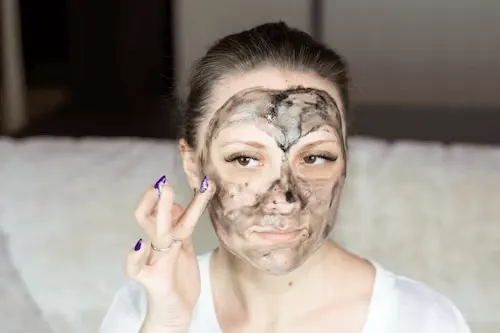Millions of people worldwide suffer from eczema, sometimes referred to as atopic dermatitis, a chronic inflammatory skin disorder. It is characterized by red, itchy, and inflammatory skin, but its effects go beyond physical pain; they frequently influence general well-being and mental health.

Even while there are a lot of treatment choices for atopic dermatitis, the sheer number of creams on the market might make it challenging to locate an effective cream.
On the other hand, being aware of the essential components of a successful treatment cream can enable people to take control of their situation and make wise decisions.
In this article, we examine the key components of a therapy cream for atopic dermatitis.
1. Emollients

Emollients are essential components of atopic dermatitis treatment cream because they are crucial in feeding and hydrating the skin. They provide a layer of defense that traps moisture, reducing the loss of water and strengthening the skin’s natural barrier capacity.
Emollients, which restore lipid levels and enhance skin texture, include glycerin, shea butter, and ceramides. Frequent use of creams high in emollients relieves dryness, itches, and irritation while accelerating skin healing.
2. Calcineurin Inhibitors

Tacrolimus and pimecrolimus are examples of calcineurin inhibitors that provide an alternative to corticosteroids for the treatment of eczema, especially in delicate regions like the face and groin. These immunomodulators reduce inflammation and itching by preventing T-cell activation and cytokine production.
Although calcineurin inhibitors are usually well tolerated, using them might cause a brief burning sensation at the site of administration.
3. Corticosteroids
The strong anti-inflammatory properties of corticosteroids make them a popular choice for treating moderate to severe eczema symptoms. Low-potency corticosteroids like hydrocortisone and desonide, when added to topical creams, can work wonders in reducing inflammation and itching without having a major negative impact.
Corticosteroids should only be used sparingly and under medical supervision due to the possibility of skin thinning and other negative side effects from prolonged use.
The itching and suffering brought on by eczema flare-ups are reduced by these substances because they address the underlying inflammatory reaction.
4. Plant Extracts

Symptoms of atopic dermatitis are successfully controlled using the botanical form of extracts.
Anti-inflammatory, antioxidant, and wound-healing constituents such as aloe vera, chamomile, and calendula can be found among the components. They reduce skin irritation and subsequently allow faster tissue repair.
Combining these organic elements supplies a gentle yet effective skin care solution suitable for people with more sensitive skin complexion.
Calendula or chamomile removes the redness and prevents irritation, while aloe vera, which has a healing effect on irritated skin, speeds up the healing process. Treatment responses are enhanced to be more effective by supplementing plant extracts with current eczema medications.
5. Antimicrobial Agents

Antimicrobial medicines must be included in therapy creams for atopic dermatitis since secondary bacterial or fungal infections frequently exacerbate the condition. Broad-spectrum antimicrobial ingredients, such as chlorhexidine and benzalkonium chloride, inhibit the growth of microorganisms and lower the risk of infection.
Antimicrobial ingredients in eczema treatments encourage good skin cleanliness and prevent symptoms from worsening.
6. Humectants
To improve hydration and sustain skin moisture levels, humectants draw water molecules from the surrounding environment into the skin. Common humectants such as sorbitol, urea, and hyaluronic acid reduce atopic dermatitis-related dryness and scaling, increasing skin suppleness and elasticity.
Humectants provide long-lasting hydration by creating a barrier of protection on the skin’s surface to stop transepidermal water loss.
Frequent use of creams rich in humectants guarantees the best possible skin moisture retention, lowering the chance of exacerbations of eczema and preserving skin health. Adding humectants to skincare regimens is a critical first step in controlling atopic dermatitis and enhancing general skin health.
7. Barrier Repair Components
Atopic dermatitis is characterized by impaired skin barrier function, which increases sensitivity to allergens and irritants. Ceramides, cholesterol, and fatty acids are examples of barrier repair constituents that aid in repairing the integrity of the skin barrier, improving the skin’s capacity to hold onto moisture and fend off outside aggressors.
Creams containing these substances relieve dryness and stop flare-ups of eczema by fortifying the skin barrier.
8. Antipruritic Agents
Itching, or pruritus, is a common atopic dermatitis symptom that severely lowers a patient’s quality of life. Antipruritics that chill the skin and dull sensory nerve endings, such as menthol, camphor, and pramoxine, offer momentary relief from itching.
These substances break the cycle of itching and scratching, providing instant relief without aggravating skin irritation. Long-term eczema care requires treating the underlying source of itching, even while antipruritic drugs provide symptomatic relief.
9. Anti-Inflammatory Agents

Since anti-inflammatory drugs are essential in therapy creams for atopic dermatitis, they are a necessary component of the disease. Reducing redness and calming irritated skin are the anti-inflammatory qualities of ingredients like licorice extract, niacinamide, and colloidal oatmeal.
Bottomline
Targeting important components of the disorder, such as inflammation, itching, dryness, and compromised barrier function, atopic dermatitis therapy creams should include a synergistic mix of chemicals.
People can lessen the symptoms of their eczema and enhance the general health of their skin by choosing products that include the aforementioned components.
However, before beginning any new skincare routine, it is best to speak with a healthcare provider, particularly if you have severe or chronic eczema.
People suffering from atopic dermatitis can find relief and have healthier, more resilient skin by taking good care of their skin and following a detailed treatment plan.

Jessi is the creative mind behind The Coffee Mom, a popular blog that combines parenting advice, travel tips, and a love for all things Disney. As a trusted Disney influencer and passionate storyteller, Jessi’s authentic insights and relatable content resonate with readers worldwide.
